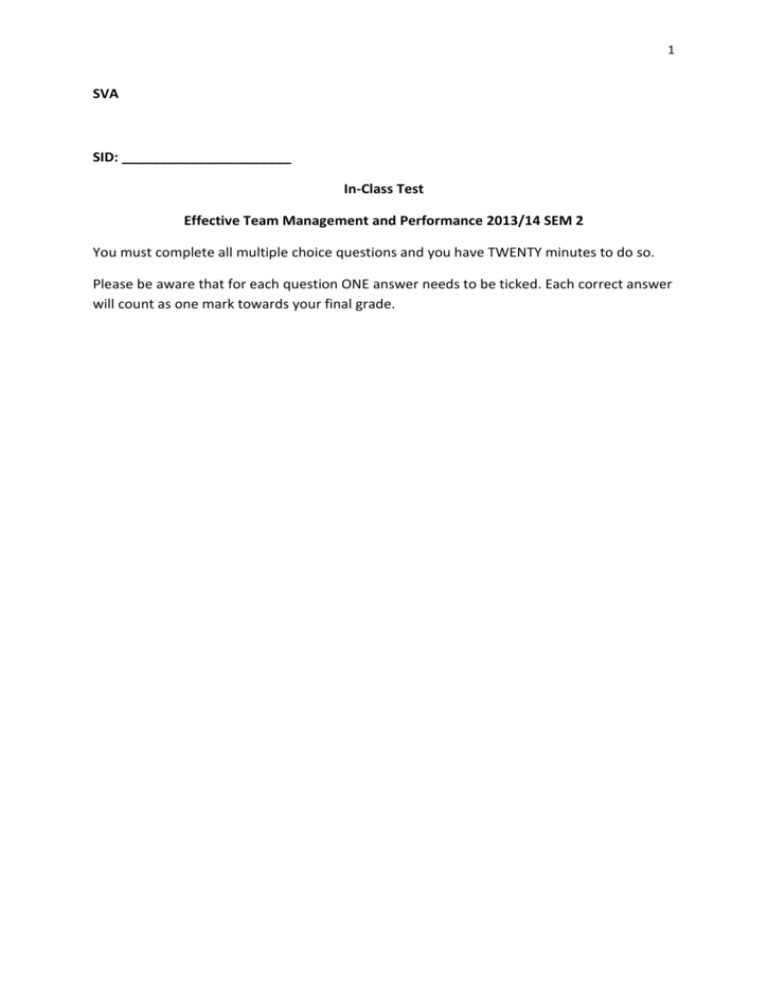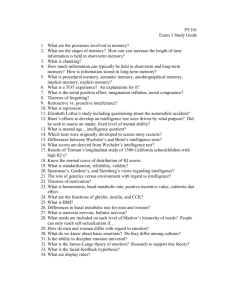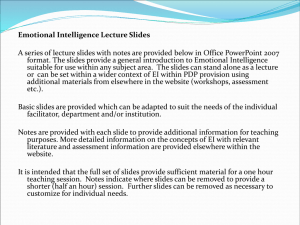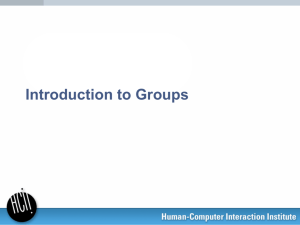1 SVA SID: In-Class Test Effective Team Management and
advertisement

1 SVA SID: ______________________ In-Class Test Effective Team Management and Performance 2013/14 SEM 2 You must complete all multiple choice questions and you have TWENTY minutes to do so. Please be aware that for each question ONE answer needs to be ticked. Each correct answer will count as one mark towards your final grade. 2 1. Select the one statement that outlines defining characteristics of informal groups a) Individuals who are put together by an authority figure b) Individuals who work together on a project c) Individuals who form groups on the basis of social ties d) A social group that is cohesive 2. Which of the following identifies the characteristics of a ‘real’ team? a) A team of people who have a shared purpose, goals and norms and complement each other. They are equally committed to the teams’ goals. b) A team which has a common goal, but is not mutually accountable. c) A team which has identified a performance need, but is not yet focused on the steps required to achieve it. d) A team which interacts to share information and engages in decision making, but does not have a common goal. 3. Which factors do Tannenbaum et al. (2011) discuss in relation to the changing nature of teams? a) Cohesion, team dynamics and team size b) Technology and distance, dynamic composition, empowerment and delayering c) Social identity, team performance and technology and distance d) Empowerment, delayering and emotional intelligence 4. Which of the following makes up the Big 5 personality types? a) Agreeableness b) Extraversion c) Neuroticism d) Conscientiousness e) Openness to experience f) All of the above 5. According to the rule of thumb outlined in Fisher’s et al. (2011) article, which pairing of team roles would allow for a harmonious and productive interaction? a) both fall in the relationship category b) both fall in the task category c) one person’s role falls in the relationship category, the other’s in the task category 3 6. Which of these statements explain social exchange theory? a) A model to explain why people in teams are more cohesive that those in groups b) A theory based on relationships which are initiated through the reliable exchange of rewards and the reduction of costs c) A theory that identifies the costs of joining a group d) A model that explains how communication between individuals is sustained in a team 7. Which three types of cohesion do Rosh et al. (2012) discuss? a) Task, social and structural b) Social, technological and emotional c) Task, relationship and technological d) Relationship, structural and size 8. What is the relationship between team cohesion and team performance? a) There is none b) Cohesion influences performance and vice versa c) If there is a low alignment of team goals and organisational goals but high team cohesion, then there is a strong increase in team performance 9. What is hazing? a) initiation of a person to a group that subjects the new member to mental or physical discomfort b) initiation of a person to a group that subjects the member to harassment, embarrassment, ridicule or humiliation c) all of the above 10. Zajonc (1965) discusses the theory of social facilitation; what is this theory about? a) Individuals are better at engaging in tasks which require non-dominant responses, compared to dominant. b) Individuals perform better in the presence of others, particularly when engaging in dominant tasks, compared to non-dominant ones. c) Simple tasks have no impact on the performance of people in a team. 4 11. Based on levels of team conformity, when does team performance reach the highest level? a) low conformity/high deviance b) moderate conformity/moderate deviance c) high conformity/low deviance 12. What does the acronym KSA stand for? a) Knowledge, separation and acceptance b) Knowledge, sensibility and attitude c) Knowledge, skills and attitude d) Knowledge, skills and ability 13. Who is the founder of Emotional Intelligence? a) Goleman (1995) b) Wilson (2009) c) Northouse (2011) d) Buchanan and Huczynski (2010) 14. According to George (2000), what are aspects of emotional intelligence? a) appraisal of emotion and expression of emotion b) the use of emotion to enhance cognitive processes and the use of emotion to enhance decision making c) knowledge about emotions d) management of emotions e) all of the above 15. According to Druskat and Wolff (2001), when does a team have group emotional intelligence? a) If all team members have high emotional intelligence. b) If there is a team atmosphere in which the norms build emotional capacity and influence emotions in constructive ways. c) If the leader has high emotional intelligence.







